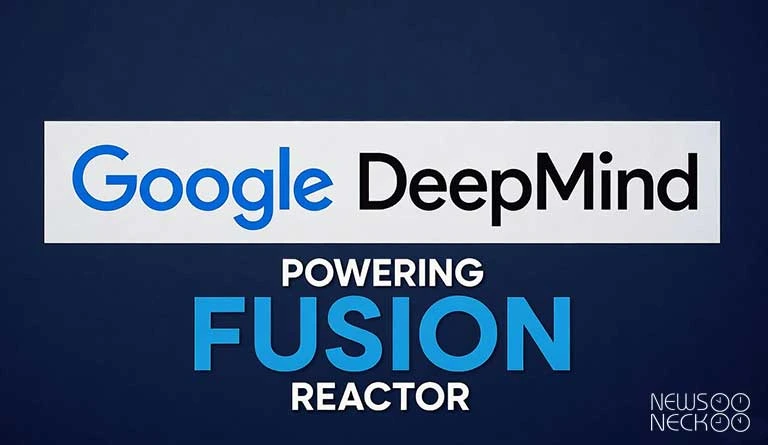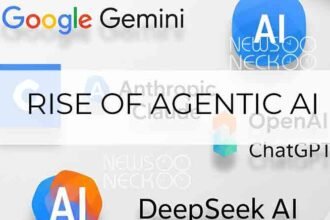How AI and Fusion Could Give Us Limitless Clean Energy
Imagine a world with nearly unlimited clean energy. No more power plants burning fossil fuels. No more worrying about where our electricity comes from. This dream, powered by the same energy that fuels the sun, is called nuclear fusion. And artificial intelligence might be the key to making it real.
In an exciting partnership that sounds like science fiction, Google’s AI research lab, DeepMind, is teaming up with fusion company Commonwealth Fusion Systems (CFS). Their mission: use advanced AI to solve one of science’s toughest problems and bring fusion energy to our homes .
The Sun in a Machine
Fusion energy works by copying the process that powers the sun. It involves combining tiny particles from atoms to create enormous amounts of energy. The fuel comes from water, it doesn’t produce the long-lasting radioactive waste of current nuclear plants, and it could provide constant power regardless of weather .
But there’s a catch. To make fusion happen on Earth, we need to heat special gas called plasma to over 100 million degrees Celsius hotter than the center of the sun. At that temperature, the plasma would destroy any material container it touches .
The solution? Powerful magnetic fields that act like an invisible bottle to contain the superhot plasma. The machine that does this is called a tokamak. CFS is building an especially advanced one called SPARC that uses revolutionary magnets .
The challenge has been keeping the plasma stable long enough to generate more energy than the process consumes a milestone called “breakeven” that no fusion reactor has yet achieved for sustained power generation .
You Might be interesting in: Meta, Blackrock Spending Billions in AI Race
When AI Meets Cosmic Power
This is where DeepMind’s artificial intelligence comes in. Controlling plasma is like “trying to capture a tiny sun in a magnetic bottle,” as one expert described it. It involves constantly adjusting multiple control, magnetic fields, heating systems, and fuel injection, faster than any human ever could .
“Everyone talks about how much energy AI is going to use, but AI can actually help the energy equation on the supply side too,” CFS CEO Bob Mumgaard told Axios .
The partnership builds on DeepMind’s previous success in using AI to control plasma. In Switzerland, they showed AI could successfully manage plasma shapes using a technique called deep reinforcement learning – the same technology that mastered complex games like Go .
Now they’re applying this expertise to optimize CFS’s SPARC reactor, currently under construction near Boston and about two-thirds complete. The companies aim to have it operational by late 2026 or early 2027 .
Meet TORAX: The AI Simulator
At the heart of the collaboration is TORAX, special software DeepMind created to simulate fusion plasma. Think of it as a virtual laboratory where scientists can run millions of fusion experiments without the costs and risks of the real machine .
“TORAX is a professional, open-source plasma simulator that saved us countless hours in setting up and running our simulation environments for SPARC,” said Devon Battaglia, Senior Manager of Physics Operations at CFS .
What makes TORAX particularly powerful is that it can integrate AI models to explore different scenarios. It helps researchers answer questions like: What’s the fastest way to produce maximum energy? How can we protect the reactor walls from extreme heat?
The software has become so useful it’s now part of CFS’s daily workflow, helping them understand how plasma will behave under different conditions long before SPARC is even turned on .
Teaching AI to “Drive” a Reactor
The collaboration focuses on three main goals where AI can help:
First, finding the perfect recipe for fusion energy. Running a tokamak involves countless decisions about how to adjust various controls. Manually finding the optimal settings to produce the most energy while staying within safe limits is incredibly difficult .
Using TORAX combined with AI, researchers can explore vast numbers of potential operating scenarios in simulation. The AI can rapidly identify the most efficient and robust paths to generating net energy – much like how navigation apps find the best route through traffic .
Second, real-time control. Once the reactor is operating, AI could help make constant adjustments to keep the plasma stable and distribute heat safely. This is like the difference between setting your car’s cruise control versus having a expert driver who can constantly adapt to road conditions .
Third, heat management. When SPARC runs at full power, it releases immense heat that must be carefully distributed to avoid damaging the reactor walls. AI could learn to dynamically control the plasma to spread this heat effectively .
More Than Just Science
This partnership represents a significant shift in how tech companies are approaching clean energy. Google isn’t just investing in fusion; they’re positioning themselves as AI service providers to the energy industry .
Google has already committed to buying 200 megawatts of electricity from CFS’s first commercial plant . They’ve also invested in CFS’s recent $863 million funding round . Now with the DeepMind collaboration, they’re also providing the AI tools that could help make fusion reality.
This creates a win-win scenario for Google: they help accelerate fusion development while creating potential revenue streams from AI services .
The timing is strategic. The AI boom has created enormous demand for electricity to power data centers. Fusion could potentially provide the clean, abundant energy needed to feed this demand .
The Road Ahead
While fusion energy has been “just decades away” for generations, many experts believe we’re closer than ever to breakthroughs. AI is cited as one of the key technologies enabling remarkable advances in recent years .
CFS aims for commercial availability of fusion power in the early 2030s . Mumgaard sees AI as crucial to making that timeline reality.
“We are close to breaking that meme,” he said, referring to fusion always being in the distant future, noting that AI was once seen the same way .
The DeepMind-CFS collaboration represents more than technical progress – it’s about bringing together two revolutionary technologies that could mutually accelerate each other. As AI helps solve fusion, the limitless clean energy from fusion could power even more advanced AI.
As DeepMind stated: “By uniting the revolutionary potential of AI and fusion, we’re building a cleaner and more sustainable energy future” .
For the rest of us, it brings hope that the clean, abundant energy source that’s powered the stars for billions of years might soon power our homes.
Author: Junaid Arif
Date: 18 Oct, 2025
For more updates, Visit Newsneck













